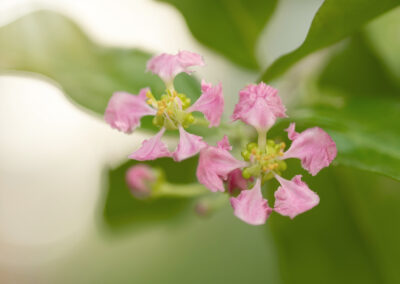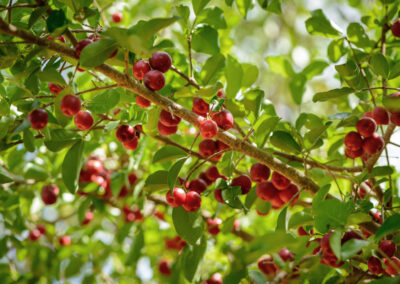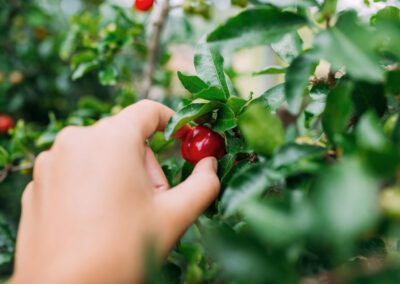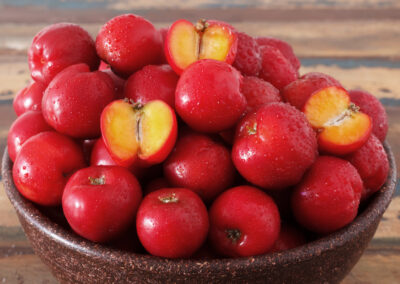
Die Acerola
(Malpighia glabra)
Today it is considered a superfood. In Central and South America, however, acerola has always been part of the diet of indigenous peoples.
Knowledge of this plant only came to Europe with the discovery of the New World. The Spanish naturalist Francisco Hernández de Boncalo traveled through Mexico around 1570 on behalf of the Spanish king and described the fruit’s high vitamin C content even then.
And he was right on the money: scientific studies today not only prove a high vitamin C content, but also a whole range of other plant substances that make acerola so interesting and valuable for us.
The acerola
A tropical cherry?
Small, round and bright red – visually, acerola fruits are reminiscent of cherries. So it’s no wonder that they used to be called “West Indian cherries” or “Barbados cherries” according to their origin. And today we often refer to them as acerola cherries. However, in purely botanical terms, acerola has nothing to do with our sweet or sour cherries.
Acerola thrives best in humid and subtropical regions. It is native to Central and South America, but is now also found in Florida, India and South East Asia.
Acerola thrives best in humid and subtropical regions. It is native to Central and South America, but is now also cultivated in Florida, India and South East Asia.

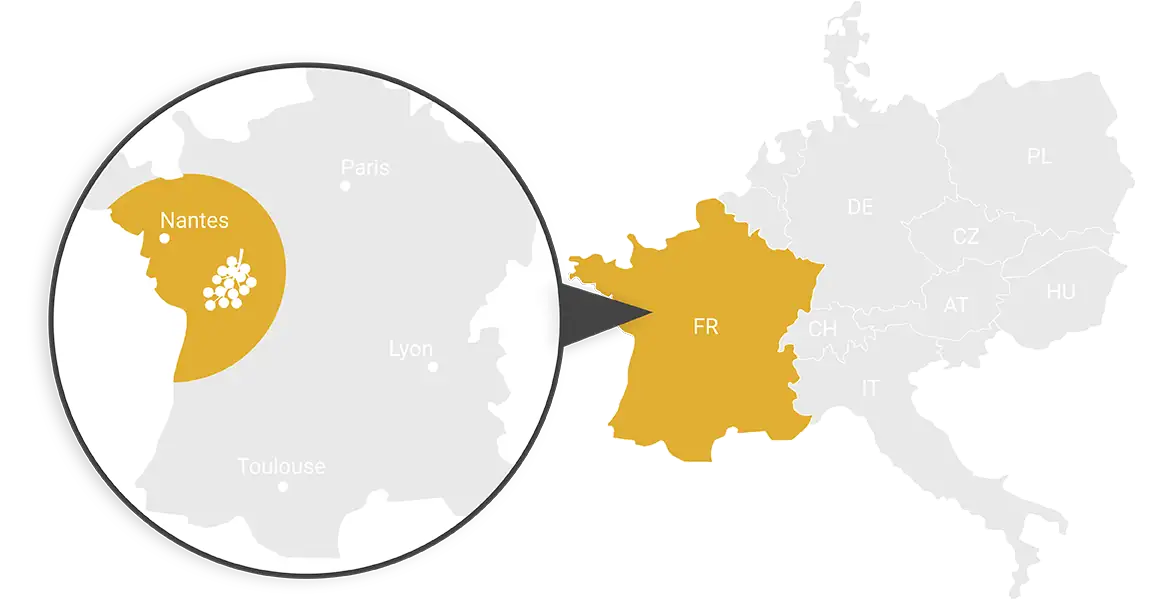
Prompt processing for the best quality
Our acerola fruits
The largest acerola growing area today is in the middle of Brazil. The fruit that we process for rubyni® acerola also comes from there.
Only the best fruit from each harvest is used. They are picked by hand and make up just one to five percent of the total yield. Due to their rapid perishability, the fruits are also processed directly on site. The result: a high-quality, purely organic acerola powder with a guaranteed vitamin C content of 30 percent.
The history
Since centuries
Indigenous peoples of Central and South America use acerola as a medicinal plant and food.
16th century
European sailors became aware of acerola on their voyages to the New World, including Francisco Hernández de Boncalo, who traveled through Mexico in the service of the Spanish king.
20th century
Acerola is becoming the focus of scientific attention due to its high natural vitamin C content.
1950
Acerola is becoming increasingly popular. New cultivation areas were established in Florida and Hawaii, and from 1970 also in Thailand.
From 2010
Acerola is considered a superfood due to its diverse plant substances. Numerous scientific studies have been carried out on the fruit.
